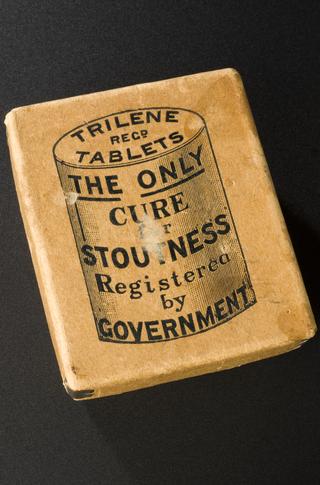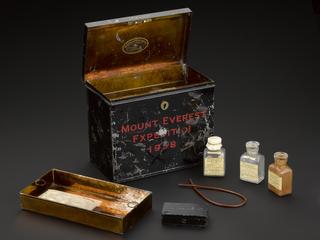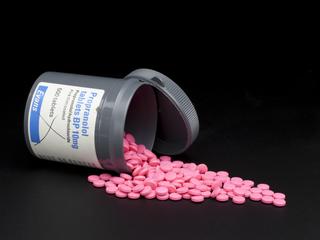
Paper packet containing a mustard plaster, United States, 1880-1920
- Made:
- 1880-1920 in United States

Paper packet containing Mustard Plaster, by Seabury and Johnson, USA, 1880-1920
Mustard plasters or poultices were intended to be applied to the chest in order to ease congestion. They could also act as a counter-irritant, by causing irritation to the skin in the belief that it would ease a deep, internal complaint. The mustard had been spread on to a piece of cloth and first needed to be moistened before it was applied to the skin. Mustard plasters tended to get hot and could cause blistering to the skin if left on too long. This example was made by Seabury and Johnson.
The illustrations around the rim of the packet are examples of the many medals won by Seabury and Johnson for their product.
Details
- Category:
- Materia Medica & Pharmacology
- Collection:
- Sir Henry Wellcome's Museum Collection
- Object Number:
- 1989-93/55
- Materials:
- paper
- Measurements:
-
overall: 124 mm x 101 mm
- type:
- plaster
- credit:
- On loan from the Wellcome Trust




